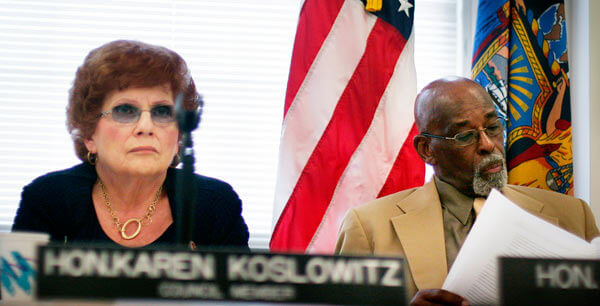By Joe Anuta
City lawmakers held a hearing in Kew Gardens Monday to investigate the benefits of a state program to bring banks into low-income and underserved areas of Queens and the rest of the city.
“The availability of access to banking institutions and their credit and investment capital is vital in creating and retaining jobs and supporting small businesses,” City Councilwoman Karen Koslowitz (D-Forest Hills) said at the hearing, held at Queens Borough Hall, at 120-55 Queens Blvd.
Koslowitz, who chairs the Committee on Economic Development, and Councilman Ruben Wills (D-Jamaica) recently called for more banks in Richmond Hill, which Koslowitz brought up as an example of an underserved area.
“People actually have to get on a bus if they want to have a bank,” she said.
About 6 percent of Queens households are without a bank account, which, compared to other rates like 30 percent in the Bronx, is the lowest percentage in the five boroughs, according to a Council report. But that 6 percent translates to more than 108,000 Queens residents lacking an account.
The Council report also revealed a large disparity between the ratio of traditional financial institutions like banks and non-traditional institutions such as check-cashing locations, depending on the racial makeup of a neighborhood.
In Bayside and Douglaston, where the black and Latino population is less than 10 percent, there are 15 banks and credit unions for every one non-traditional financial institution.
But in underserved areas like Jamaica, non-traditional institutions outnumber banks 2-1, the report said.
The Council report blasted non-traditional institutions, which also include pawn shops and payday loan centers, as taking advantage of residents by offering more expensive, less advantageous services than those offered by banks and credit unions.
The state Banking Development District Program provides incentives for banks to open in underserved areas, according to Yulitza Franklin of the state Banking Department, which can bring better services to underserved areas.
The incentives include up to a $10 million deposit of city money in the banks’ coffers in exchange for opening a branch and providing financial education to residents, a lack of which, along with proximity to banks, is one of the main reasons why Queens residents do not open accounts.
Queens currently has two districts in Long Island City and Corona Heights, which have increased home ownership loans, the number of residents with bank accounts, financial education services and have donated to local civic organizations, Franklin said.
Seth Bornstein, executive director for the Queens Economic Development Corp., was also present at the hearing.
“It sometimes appears that Queens is well-served by banks — a walk along Continental Avenue in Forest Hills and Main Street in Flushing reinforces this opinion,” he said in a statement. “In reality, large swaths of communities — such as southeast Queens and parts of Rockaway — are in real need of local banks.”
Reach reporter Joe Anuta by e-mail at januta@cnglocal.com or by phone at 718-260-4566.


































